Warsaw is a city with clout.
When I mentioned our plans to visit the Polish capital, people seemed excited about Warsaw but couldn’t quite put a finger on why.
I myself couldn’t dredge up much Varsovian history beyond the city’s devastation in World War II and a vague notion of the Warsaw Pact (a very vague notion, as it turns out… Mr. M & I were standing outside the building where the Warsaw Pact was signed and realized that neither one of us could verbalize exactly what it was that the Pact had decided. Apologies to our high school history teacher. **Answer’s in the pic below!**).
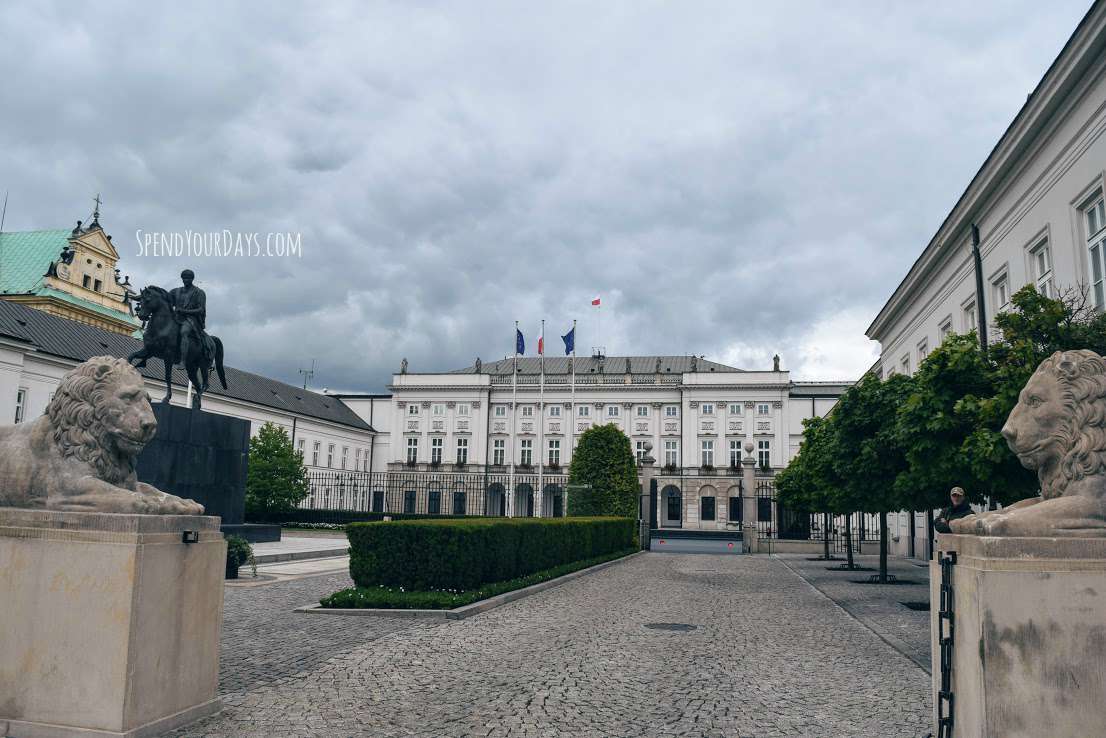
When I was an undergrad, Lech Walesa (the first elected President of Poland after Soviet rule ended in 1989 and a winner of the Nobel Peace Prize) came to speak at our college. 18-year old Me had zero idea who he was until I attended the lecture, and 33-year old Me had zero idea how to pronounce his name until I started studying Polish before our trip and realized that Walesa = Vah-WEN-sa. (Of… course?)
Am I the only one without a handle on Polish history, beyond random odds & ends like ‘Soviet Bloc’ and ‘World War II’ and ‘Warsaw Pact’ and ‘pierogi’ bobbing around my head?
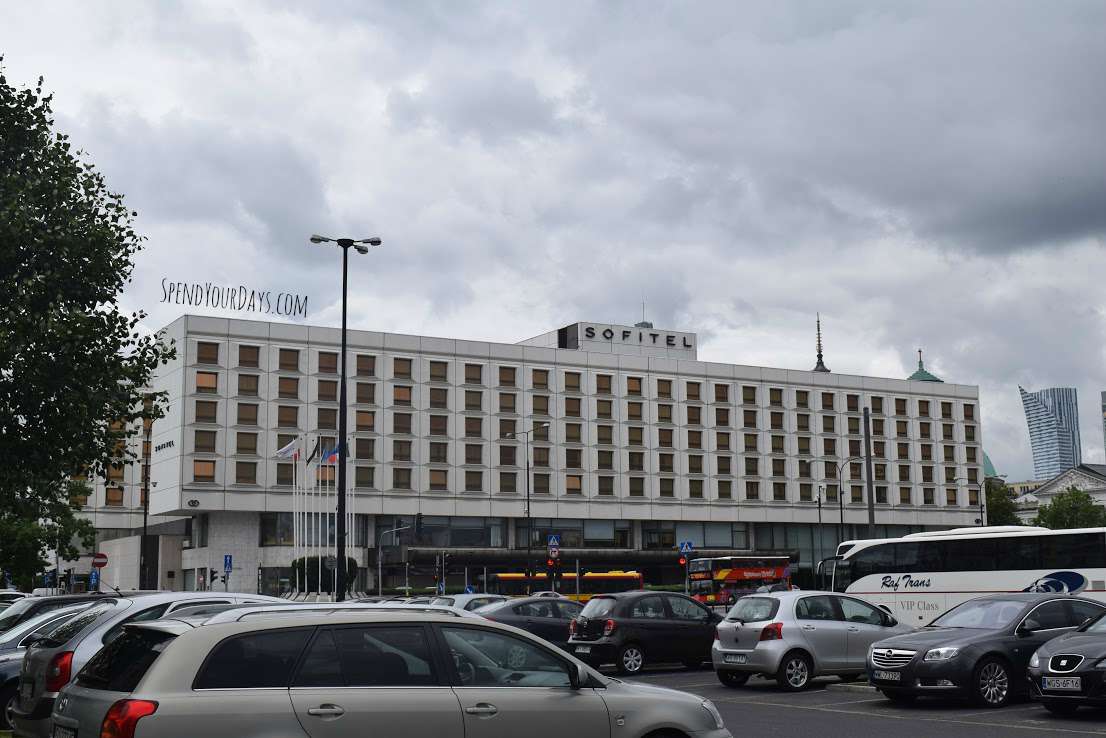
Somehow Poland got skipped over in the history wedge of my brain.
And skipped over, it would seem, in the itineraries of tourists visiting Europe. On a Friday in July, Warsaw was nearly devoid of visitors.
Day #12,136 (Warsaw, Poland): Coming out of the Warsawa Centralna station, our first view of the city took us straight back to last year’s visit to Moscow, Russia.

Moscow has a group of seven skyscrapers designed in a Stalinist style called the Seven Sisters. As a Soviet Bloc country from the 1930’s until 1989, Poland also has a “sister” building: the Palace of Culture and Science. The Poles apparently weren’t fans of this gift from the USSR and have a derisive nickname for the phallic beast that translates roughly to Stalin’s… ahem… you-know-what.
The more we wandered Warsaw, the more it became obvious that Warsaw is a city for locals. Compared to our experiences in other European capital cities, it was almost refreshing having so much trouble finding a restaurant with English subtitles for lunch. (Almost refreshing. As a veggievore, I kinda like knowing which pierogi has meat hiding within those doughy walls!)
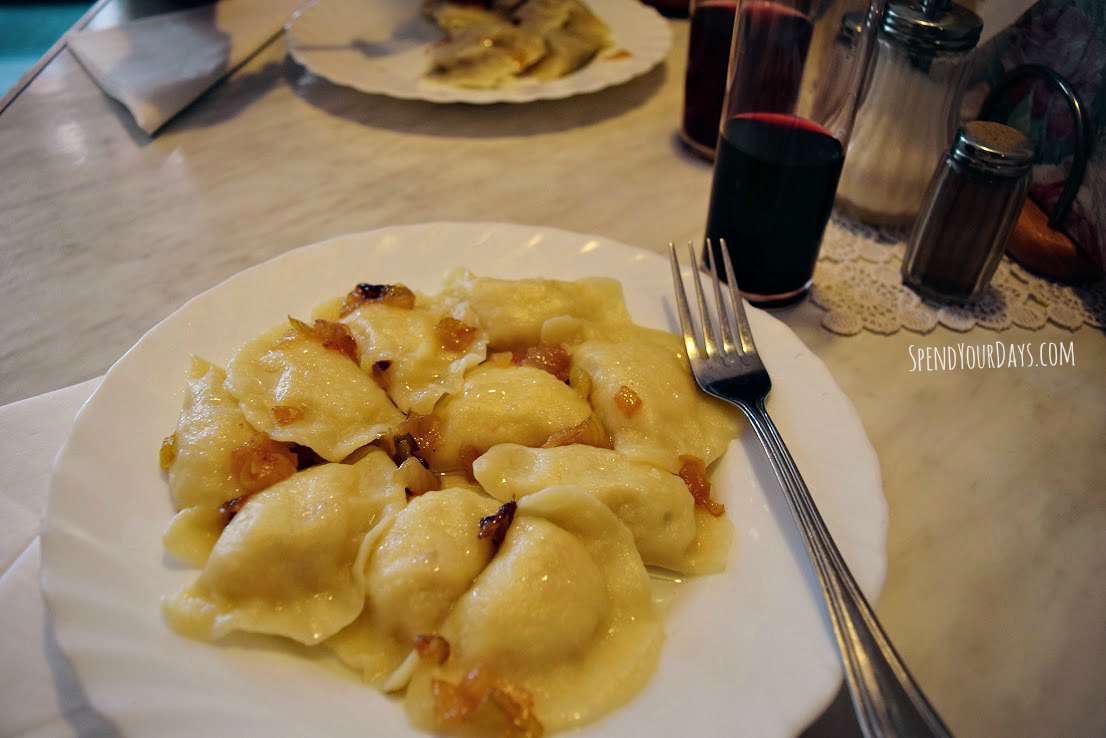
Nowy Swiat led us straight to Warsaw’s Old Town, which is a bit of a misnomer. As we soon learned while visiting the Royal Castle, Warsaw was the single most devastated city in Europe during WWII.
The Nazi regime intended to destroy the city before WWII even began, with Third Reich city planners imagining Warsaw as a provincial German town rather than the capital city it was. After the Poles rose up in the Warsaw Uprising of 1944 (the largest European resistance movement of the war!) to protest the slaughter of thousands of civilians, Hitler ordered that the entire city be razed to the ground.
And with 84% of the city destroyed and a quarter of the Polish population dead after WWII, it pretty much was. Warsaw was reduced to rubble. Heartbreaking black and white photographs showed the exact location where we were standing, completely- gone.
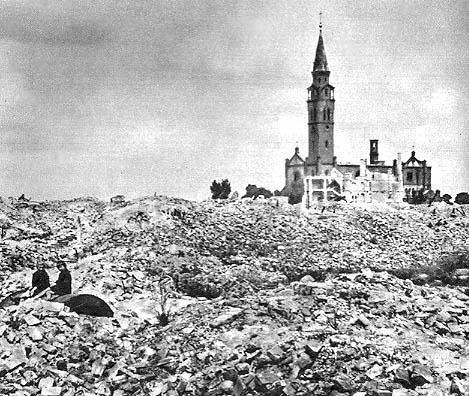
The facade of the Royal Castle, standing since the 1400’s, was knocked down. Museum workers risked execution to save a few historic wood panels and paintings, but the rest was either stolen or simply destroyed.

After the bombing of Warsaw, the Polish had to decide whether or not to move their capitol or to rebuild from scratch. Over decades, they painstakingly recreated their city, using old oil paintings and photographs saved by those brave museum workers to replicate paint color or the exact location of a door. Some buildings were even rebuilt on a slight angle in keeping with their medieval origin!
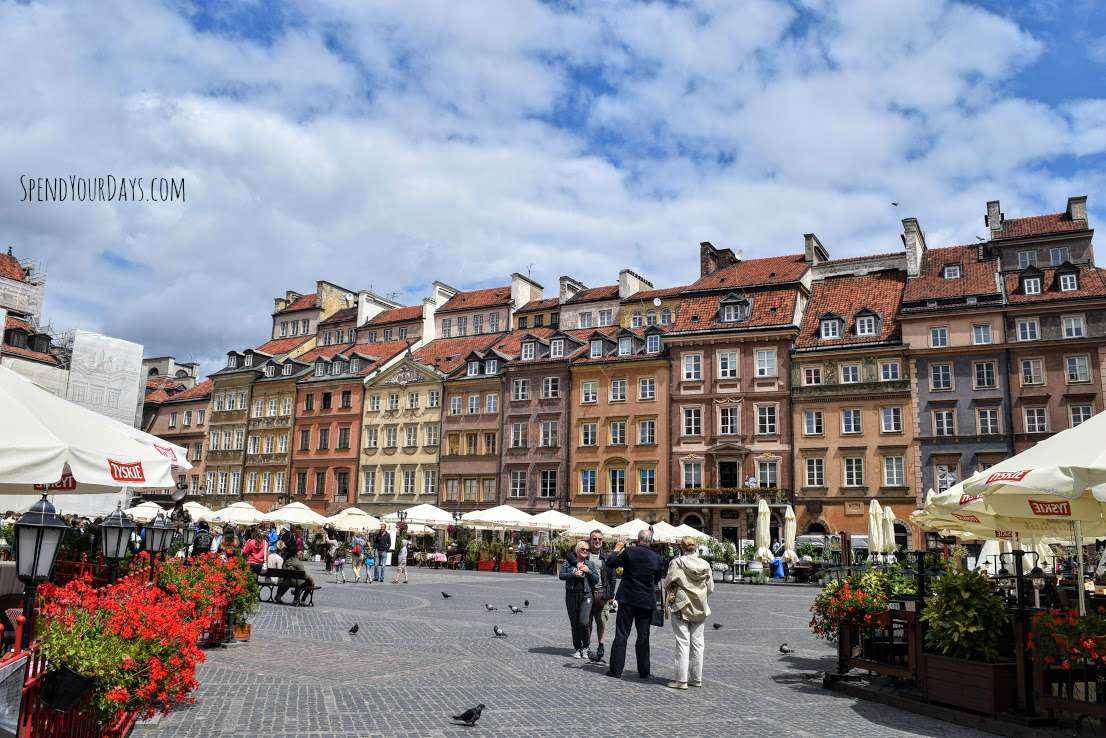
I was astonished to see the entire city destroyed, but perhaps more shocking was realizing that it had ACTUALLY BEEN REBUILT. Faced with such a monumental task, most nations would’ve thrown in the towel.
Perhaps I shouldn’t have been surprised to learn that Poland has been invaded more often than almost any other country in the world. And every time, the Polish have rebuilt: their heritage, their cities, their faith. That kind of resilience is astounding.
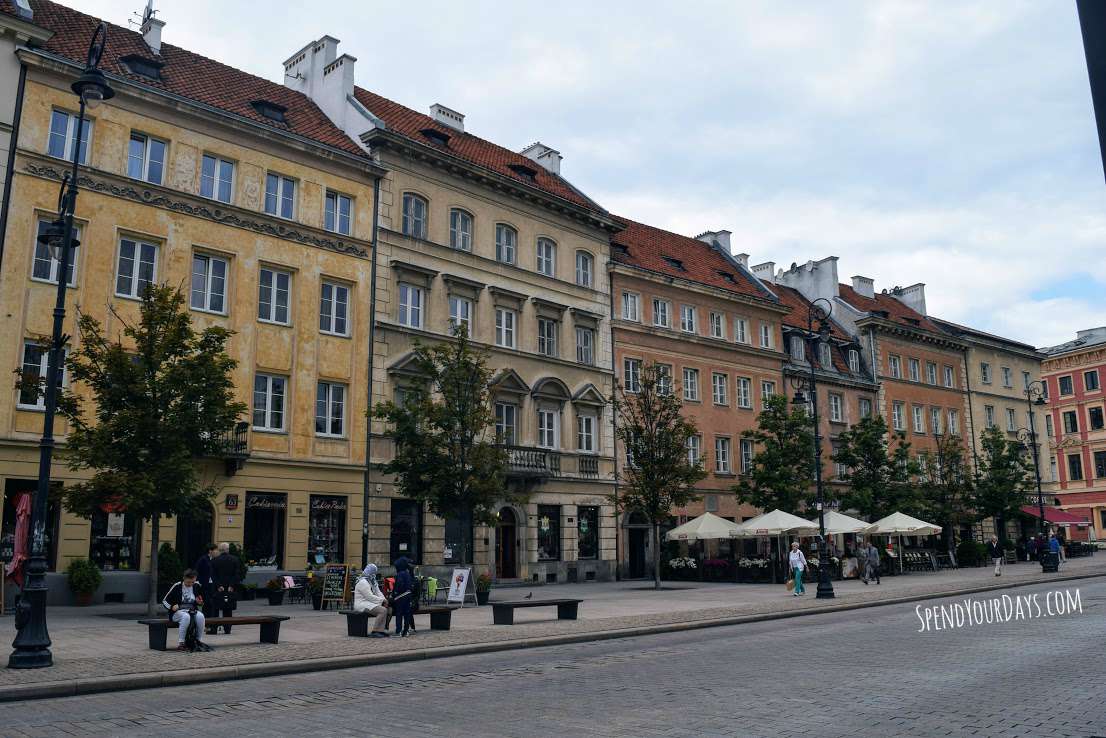
On the train ride from Warsaw to Berlin, my thoughts kept returning to this idea of reconstruction.
That even when something levels us- maybe, especially when something levels us- we dust ourselves off and rebuild.
That having to rebuild- whether it’s rebuilding a city after a war or regaining muscle tone after an injury or repairing a heart after loss- might just make us stronger in the knowledge that our spirit can’t be quelled by what will soon become a bump in the road.
That you fight for what was lost because you know you have something that’s worth rebuilding.

It’s probably worth devoting a bit more of my brain space to Polish history.
Like I said, Warsaw is a city with clout.
And some darn fine pierogis, too.
[divider fw_shortcode_id=”1″]
Spend Your Day… in Warsaw, Poland
Visiting Warsaw and the Royal Castle totally reminded me of the movie The Monuments Men, which is based on the true story of an allied task force dispatched to recover stolen works of art in Nazi Germany. While the movie doesn’t have to do with Poland directly, the discussion about wartime losses beyond human life (which is terrible enough) rings true.
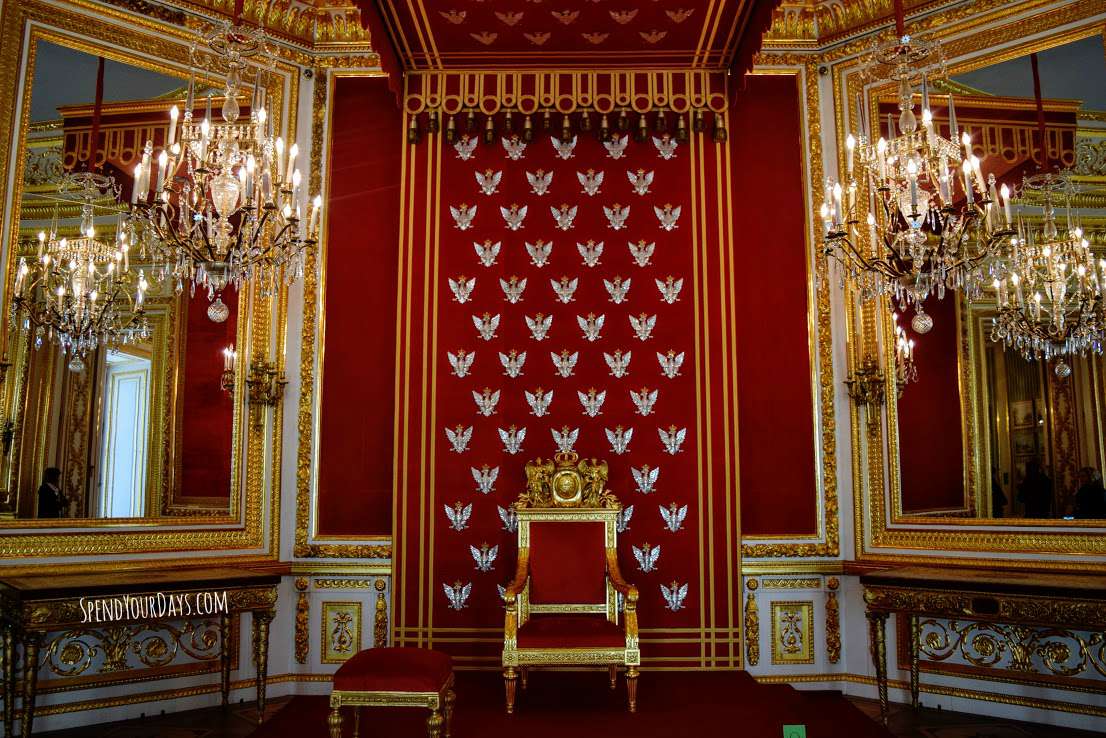
As much as I gained from visiting Warsaw, Mr. M & I found that we didn’t need more than a day to take in the city’s sights. (And Poland’s excellent rail system makes a day visit completely possible.) If you’re planning a trip to Poland, you might enjoy devoting more time to places like Krakow and Wroclaw, although you should DEFINITELY still give Warsaw the benefit of a day!
One last piece of Polish World History trivia to bust out at cocktail parties (… am I the only one who does that? perhaps that’s why I don’t get invited to many cocktail parties…). Scientist Marie Curie, Nicolaus Copernicus (who postulated that the sun is the center of our universe rather than the earth), and Joseph Conrad (the author of Heart of Darkness) were all Polish! Marie Curie named the radioactive element that she discovered “Polonium” after- yup, you got it- her native Poland.
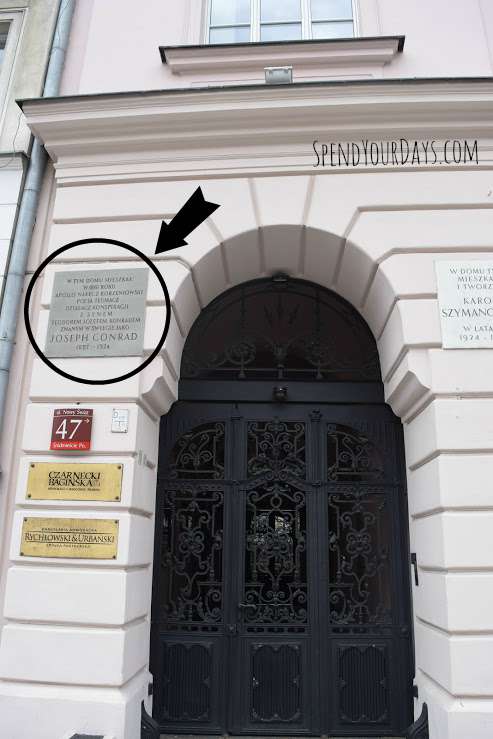
Joseph Conrad was born Józef Teodor Konrad Korzeniowski, and considering it took me 15 years to learn how to pronounce “Lech Walesa,” I’m gonna stick to Joseph Conrad.

LOVE!!! I love the history that you share! Makes me want to go take it all in first hand! And someday I will! I knew Poland was devastated during the war, but not that is was the most destroyed place over all... so sad... but at the same time, how amazing to know that they kept on going and didn't give up! I like your linking it to how life can be... I am totally inspired now to get back into training... it's so true! Have a great week!!!
e7JfyqxE4lsbqQ